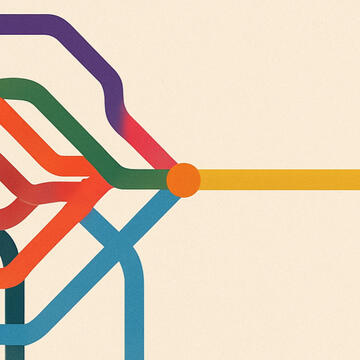
Signal as Infrastructure
Signal as Infrastructure is the first book to define and document the emerging discipline of Signal Architecture and the role of the Signal Architect. Currently in progress, it is grounded in Justin Auciello's nearly 15 years of fieldwork: running Jersey Shore Hurricane News during Superstorm Sandy and in the decade that followed; building civic information networks after Hurricane Maria in Puerto Rico; and providing strategic guidance on global Information Ecosystem Assessments in fragile and post-conflict regions.The book makes a simple but urgent argument: information is not just content, it is infrastructure. When systems collapse, communities lose orientation, trust, and the ability to act. Without trusted signal, people are left to navigate chaos alone. But with the right design, public information systems can help communities hold together, maintain agency, and recover faster. Just as importantly, these systems also strengthen trust and connection during periods of calm. The foundation for resilience is built long before the next crisis arrives.This work directly responds to today’s accelerating crises of disinformation, climate disruption, and institutional fragmentation.Signal as Infrastructure draws on a broad lineage. The work is informed by the community-centered urbanism of Jane Jacobs, by systems thinking, by humanitarian information practice advanced through organizations such as Internews, and by field research in civic media, crisis communication, and participatory design. Academic theory is woven throughout the book, but always grounded in lived field experience and shaped by collaboration with planners, journalists, first responders, civic technologists, and humanitarians.The book offers both conceptual grounding and practical tools. It introduces deployment frameworks and operational models that can be adapted to a range of environments, from local communities to global response settings. It also presents Signal-in-a-Box, a replicable toolkit designed to help practitioners stand up trusted signal systems where they are needed most — before, during, or after crisis. In addition, the book provides a framework for establishing a Civic Signal Design Lab to support further applied research, development, and training in the field.Signal as Infrastructure offers direct opportunities for institutional adoption, integration, and field training, helping scale resilience practices across sectors and regions.Written for planners, journalists, emergency responders, civic technologists, humanitarians, public officials, and anyone working at the intersection of trust, resilience, and public information, Signal as Infrastructure weaves together narrative history, field case studies, academic foundation, systems methodology, and applied guidance.At its core, the book is about designing what communities need most: verified, actionable, emotionally calibrated knowledge that can hold when institutions falter, and that strengthens trust, civic connection, and two-way public feedback systems in everyday life.